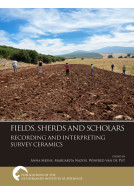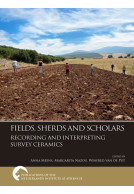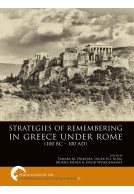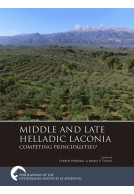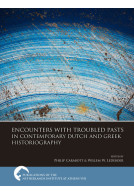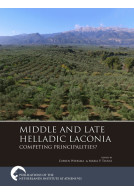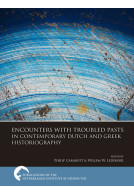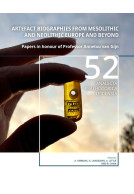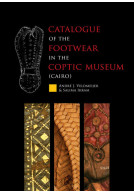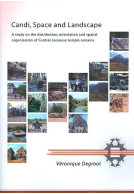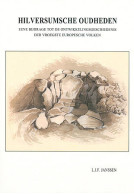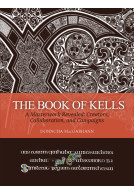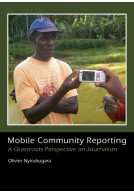Fields, Sherds and Scholars. Recording and Interpreting Survey Ceramics (Hardback)
Imprint: Sidestone Press
Series: Publications of the Netherlands Institute at Athens
Pages: 160
Illustrations: 73fc / 12 bw
ISBN: 9789464262100
Published: 15th January 2024
Script Academic & Professional
(click here for international delivery rates)
Order within the next 6 hours, 45 minutes to get your order processed the next working day!
Need a currency converter? Check XE.com for live rates
| Other formats available | Price |
|---|---|
| Fields, Sherds and Scholars. Recording… Paperback Add to Basket | £40.00 |
This book is a significant contribution to the field of survey pottery studies, which is not frequently theorised, and could also serve as a guide and provide inspiration to archaeologists designing their own survey projects and methodologies. Landscape archaeology has heavily relied on pedestrian survey as a field method for more than half a century. In most field projects, archaeological ceramics constitute the lion’s share among the finds and the amount of collected sherds is overwhelming. Survey ceramics provide the basis for understanding human activity in a landscape, and sherds serve as convenient chronological markers for the archaeological sites discovered in field projects. However, how this pottery is collected and studied determines the possibilities for using the sherds as a source material. Not only the collection practices, but also the process and practicalities of ceramic analysis are rarely made explicit, even though the archaeological interpretations of human activity in the landscape strongly rely on it. Most contributions in this volume provide an insight in collection, processing and interpretation practices in a specific survey project, and we hope this transparency is inspiring and contributes to a better understanding of surface ceramics as a basis for historical interpretations. Three themes run as a red thread through the contributions in this book: first of all transparency in ceramic collecting, processing and interpretation, secondly, improving diagnosticity, and thirdly, expanding the interpretive potential of survey ceramics. The chapters are geographically oriented towards Greece and Italy, two countries in which archaeological surface survey is widely practised. Chronologically, the contributions range from the Bronze Age to the Medieval period.
There are no reviews for this book. Register or Login now and you can be the first to post a review!
About Anna Meens
Anna Meens is a PhD candidate at the University of Amsterdam. She has participated in multiple survey and excavation projects in Greece and Turkey as a pottery specialist (for example the Boeotia Survey, the excavations of the Halos Archaeological Project at Magoula Plataniotiki in Thessaly). Her main research interest is the ancient countryside (in the Classical and Hellenistic period), for which survey ceramics are a particularly useful source of information. In her research she attempts to characterize ancient Greek rural households through patterns of pottery consumption. Besides working on rural landscapes, she also studies pottery from city settlements: she contributed to the forthcoming volume about the Boeotian town of Hyettos (with Vladimir Stissi) and currently examines ceramics from the city of Koroneia. She has also written about the Classical and Hellenistic sites in the Valley of the Muses and on the Cycladic island of Keros, both awaiting publication.
About Margarita Nazou
Margarita Nazou is a post-doctoral researcher at the Institute of Historical Studies of the National Hellenic Research Foundation. She holds a PhD in Aegean Archaeology from the Institute of Archaeology, University College London and has worked as a post-doctoral researcher in Belgium (Ghent University and Université Catholique de Louvain) and Germany (Bochum University). She has worked as a ceramic specialist studying prehistoric pottery in several survey projects in Attica (Thorikos and Porto Rafti), the borders of Attica and Boeotia (Mazi) and the Greek islands (Kea and Knossos). She has published three peer-review articles in Shima: The International Journal of Research into Island Cultures and Pharos, the Journal of the Netherlands Institute at Athens and several collective book chapters on the pottery from Thorikos.
About Winfred van de Put
Winfred van de Put held the position of director of the Netherlands Institute at Athens from 2014 to 2022. He is a specialist in Attic and Apulian vase-painting, having studied at the University of Amsterdam in the eighties with Professors Hemelrijk and Brijder. He defended his PhD on the development of the iconography on lekythoi at Ghent University in 2012 and taught archaeology at the Universities of Amsterdam, Ghent and Nijmegen (Radboud) from 2005 to 2013. In 2013-2014 he briefly held a position of curator at the Allard Pierson Museum, for which he wrote two fascicles of the Corpus Vasorum Antiquorum (3 and 4, comprising all the lekythoi of the museum). He participated in field-work in Lakonia, Carthage, Sozopol (Apollonia Pontica), Boeotia, Thorikos and Halos, mostly involved in finds processing. He is member of the editorial board of Pharos.







